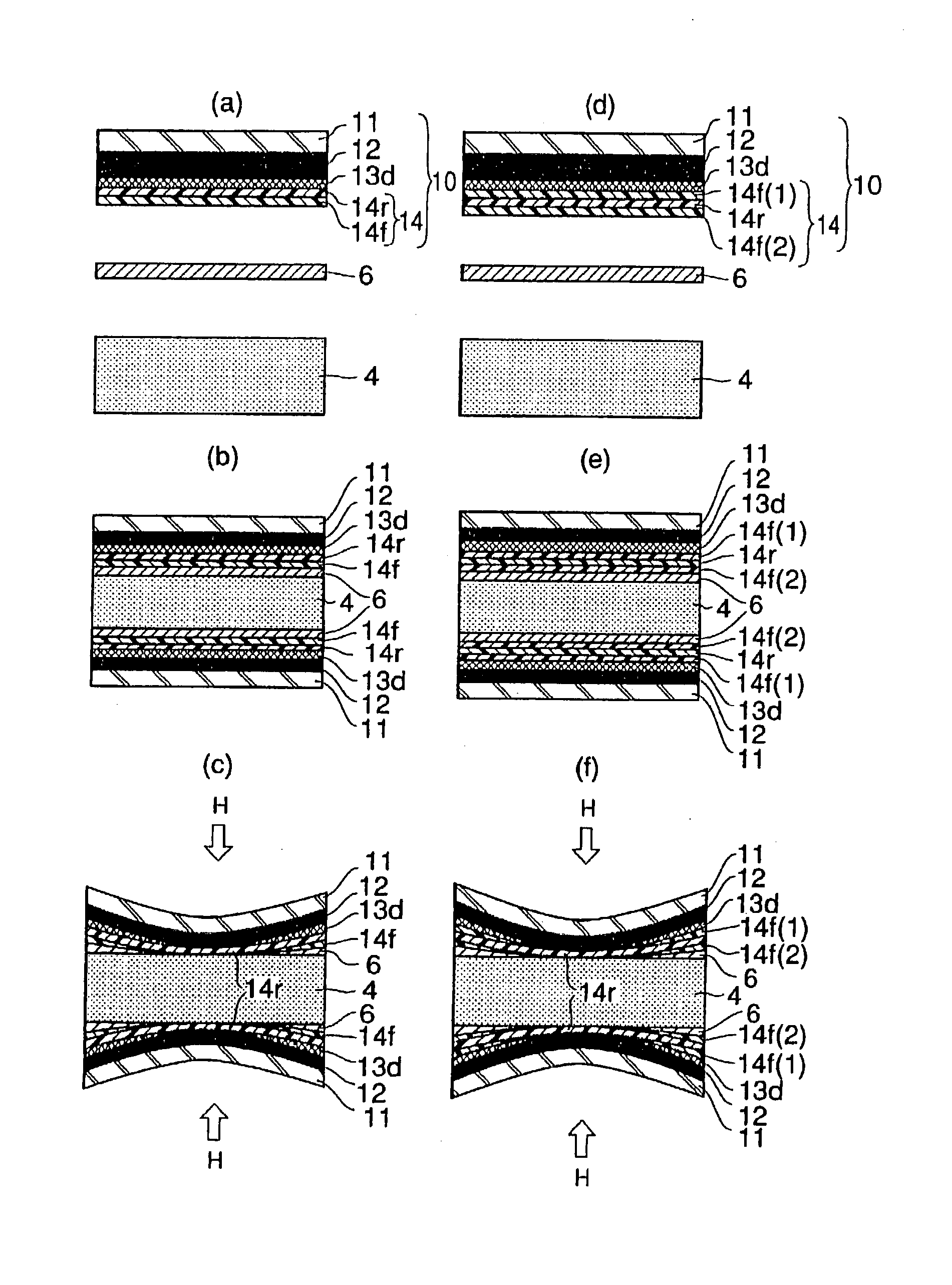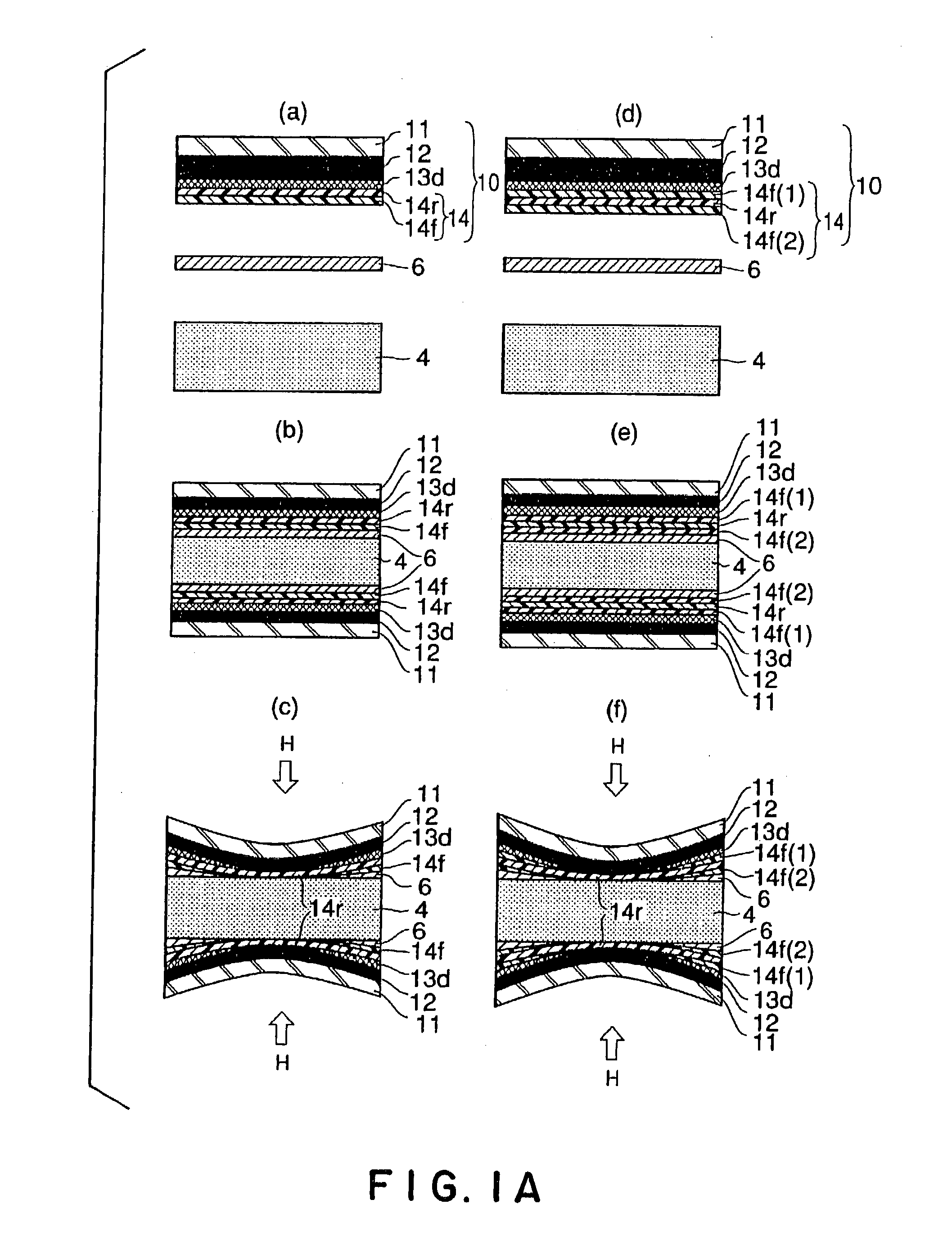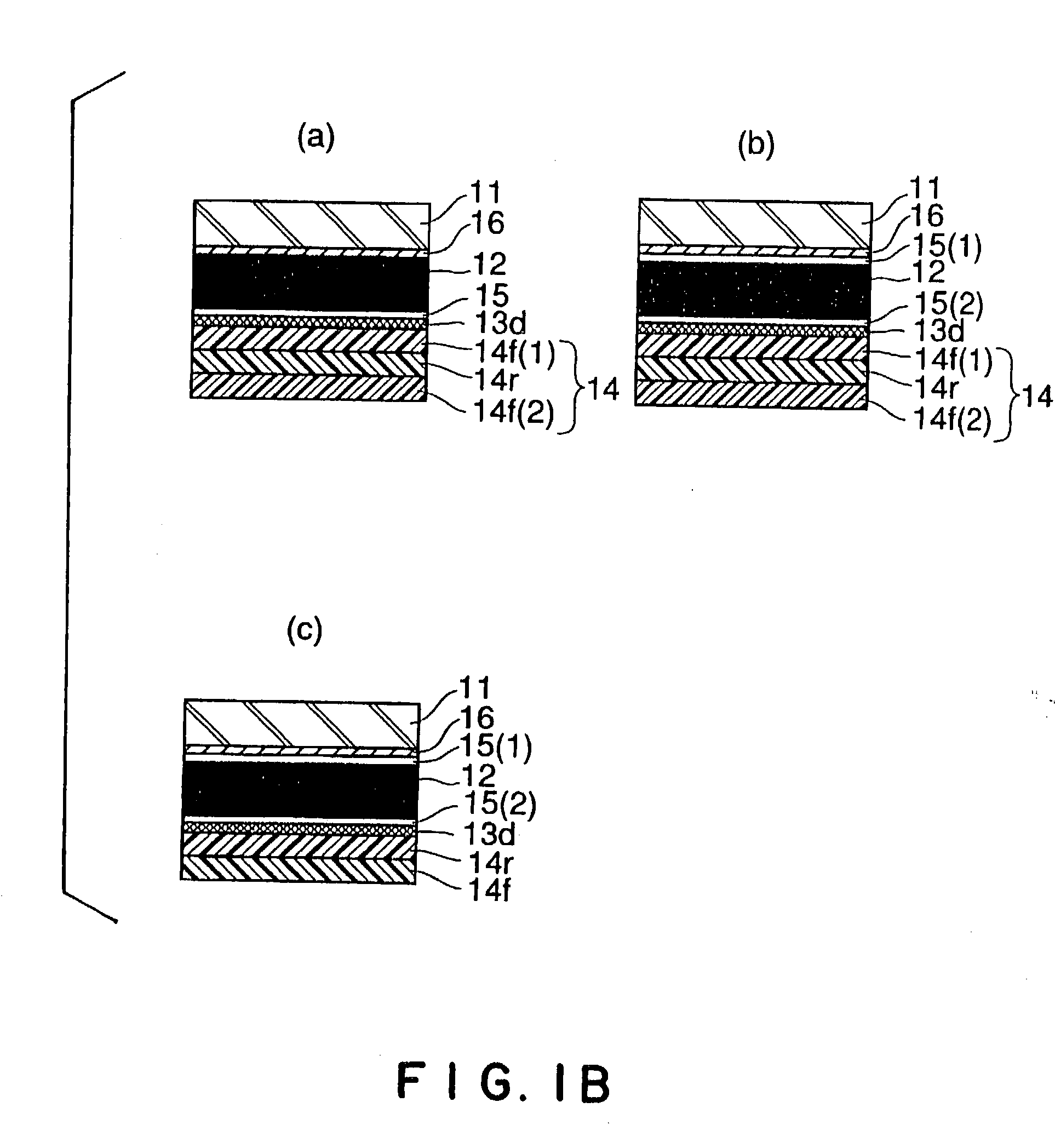Packaging material for battery
a battery and packaging technology, applied in the field of packaging materials for batteries, can solve the problems of disadvantageous limitation of the shape of the battery per se, reduced degree of shape freedom, and poor battery body protection properties, and achieve good battery body protection properties
- Summary
- Abstract
- Description
- Claims
- Application Information
AI Technical Summary
Benefits of technology
Problems solved by technology
Method used
Image
Examples
example a1
[0305] Both sides of 20 .mu.m-thick aluminum were subjected to conversion treatment, and an oriented polyester film (thickness 12 .mu.m) was laminated onto one conversion treated side of the aluminum by dry lamination. Next, a sealant layer was laminated onto the other conversion treated side of the aluminum by dry lamination. A pillow-type pouch as an armor body was formed using the laminate thus obtained.
[0306] The sealant layer had a two-layer structure of low-fluidity PP / high-fluidity PP (inner side). These PPs had the following MI and melting point. Figures in brackets indicate layer thickness ratio in coextruded multilayer. This is true of Example A and Comparative Example A which will be described later.
[0307] Low-fluidity PP: MI 0.59 / 10 min, m.p. 147.degree. C.
[0308] High-fluidity PP: MI 20 g / 10 min, m.p. 160.degree. C.
[0309] A battery body was inserted into the above armor body, and the assembly was then heat sealed for hermetic sealing to prepare a sample of Example A1.
example a2
[0310] Both sides of 40 .mu.m-thick aluminum were subjected to conversion treatment, and an oriented nylon film (thickness 25 .mu.m) was laminated onto one conversion treated side of the aluminum by dry lamination. Next, a sealant layer was laminated onto the other conversion treated side of the aluminum by dry lamination. A tray was formed by emboss molding using the laminate thus obtained. An emboss-type armor body was prepared using this tray and the unmolded laminate as a lid.
[0311] The sealant layer had a two-layer structure of low-fluidity PP / high-fluidity PP (inner side). These PPs had the following MI and melting point.
[0312] Low-fluidity PP: MI 3 g / 10 min, m.p. 147.degree. C.
[0313] High-fluidity PP: MI 7 g / 10 min, m.p. 147.degree. C.
[0314] A battery body was placed in the tray in the armor body, and the tray was then covered with the lid. The peripheral edge of the tray was heat sealed for hermetic sealing to prepare a sample of Example A2.
example a3
[0315] Both sides of 40 .mu.m-thick aluminum were subjected to conversion treatment, and an oriented nylon film (thickness 25 .mu.m) was laminated onto one conversion treated side of the aluminum by dry lamination. Next, a sealant layer was laminated onto the other conversion treated side of the aluminum by dry lamination. A tray was formed by emboss molding using the laminate thus obtained. An emboss-type armor body was prepared using this tray and the unmolded laminate as a lid.
[0316] The sealant layer had a three-layer structure of high-fluidity PP {circle over (1)} / low-fluidity PP / high-fluidity PP (inner side) {circle over (2)} . These PPs had the following MI and melting point.
[0317] High-fluidity PP {circle over (1)}: MI 10 g / 10 min, m.p. 147.degree. C.
[0318] Low-fluidity PP: MI 1 g / 10 min, m.p. 160.degree. C.
[0319] High-fluidity PP {circle over (2)}: MI 10 g / 10 min, m.p. 147.degree. C.
[0320] A battery body was placed in the tray in the armor body, and the tray was then cove...
PUM
| Property | Measurement | Unit |
|---|---|---|
| melt index | aaaaa | aaaaa |
| width | aaaaa | aaaaa |
| thickness | aaaaa | aaaaa |
Abstract
Description
Claims
Application Information
 Login to View More
Login to View More - R&D
- Intellectual Property
- Life Sciences
- Materials
- Tech Scout
- Unparalleled Data Quality
- Higher Quality Content
- 60% Fewer Hallucinations
Browse by: Latest US Patents, China's latest patents, Technical Efficacy Thesaurus, Application Domain, Technology Topic, Popular Technical Reports.
© 2025 PatSnap. All rights reserved.Legal|Privacy policy|Modern Slavery Act Transparency Statement|Sitemap|About US| Contact US: help@patsnap.com



